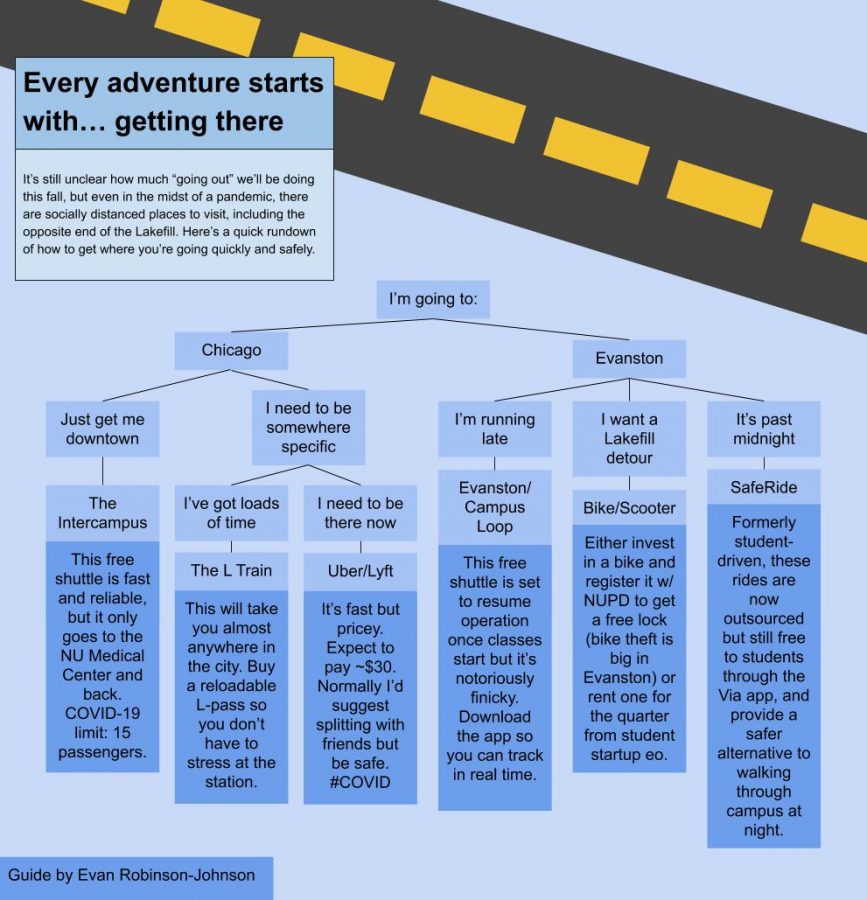How to determine when to use public transportation
Graphic by Evan Robinson-Johnson
A fun flow chart to help you decide how to get to where you need to be. Hopefully, it will just mean walking from your bed to your desk to get your computer, then back to your bed.
August 16, 2020
In the COVID-19 world of quarantine, the name of the game is reducing human contact. But on campus, should you choose to return, you likely won’t have a car or an easy way of getting around — unless walking through that inevitable October snow is your idea of fun.
While walking or biking may be an option for Fall Quarter, there might be some situations where you have to get somewhere, and you just can’t walk. So the question remains: How safe is public transportation?
For starters, Northwestern has a number of Campus Shuttles — which have limited capacities to ensure social distancing and require passengers to wear masks — that can get you around the Evanston Campus or between the Evanston and Chicago campuses. The risk of transmission largely stems from how close you are to people in areas with poor ventilation, so the capacity limits should help in that respect.
The Campus Shuttle page emphasizes, however, that the shuttles are for business, not commuting purposes.
If you have to use public transportation services from the Chicago Transit Authority, particularly the “L” trains that run through campus or the number of bus routes, here are some helpful facts. While avoiding high-touch surfaces and maintaining social distance are best practices, the CTA has implemented its own cleaning regimen. For example, every rail car and bus is cleaned before its daily service, with workers wiping down seats, grab handles and surfaces with disinfectant.
During services, high-touch surfaces of rail cars are disinfected in between runs. For buses, workers are stationed at the Navy Pier, Midway, Howard, Jefferson Park and 95th/Dan Ryan CTA stations to disinfect high-touch services of buses serving more than 40 different routes.
If you need to use a service like Uber or Lyft, there are other issues, particularly the inability to stay six feet away from someone for a prolonged period of time. While many drivers have instituted their own safety protocols, such as putting up plastic between the front and back seats, there are uncertainties with using such a service, including the health of the previous passengers and others in the car. Uber requires both drivers and passengers to wear masks, and recommends the windows be rolled down when possible.
Many organizations and businesses have grown more lenient during the pandemic, letting people work from home or otherwise engage virtually. While that remains the best option, if you have no other choice, following mask protocols and social distancing guidelines will help minimize exposure to the virus.
Email: [email protected]
Twitter: @emmaeedmund


